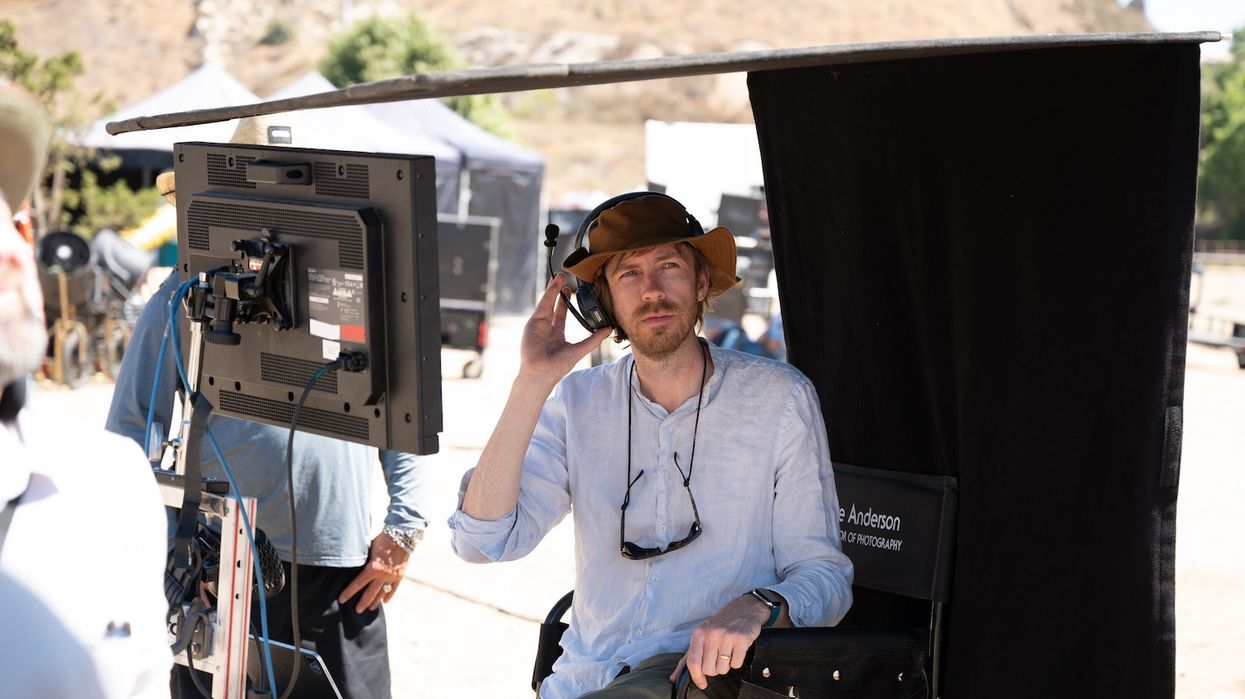How DP Joe Anderson Captured the Themes of AI, Art, and Magic in 'Mrs. Davis'
Create great work by leaning into the fictional world of your story.

This post was written by Joe Anderson.
The pilot for Mrs. Davis was co-written by Tara Hernandez and Damon Lindelof, whoserespective work I had long been a fan of. Damon’s previous series, Watchmen,was reallyimportant to me because of how prescient it was in its examination of our country’s history withracial inequity while being surreal and unexpectedly thrilling.
This depth of storytelling was alsopresent in Mrs. Davis,with challenging questions, like: are we losing free will and individuality inthe pursuit of comfort, and what is the role of faith today, in an increasingly contradictory world?
What made this story compelling was that these serious themes were wrapped in an enormousamount of fun, with sword fights in 14th century France, a shipwreck survivor and his cat on adeserted island, shady magicians in Reno, a mysterious falafel shop, dart guns, motorcycle jumps, and in the middle of all this, a nun who is desperately trying to avoid interacting with a world-manipulating AI technology.
I was hooked after reading the pilot script and not onlywanted to help create this story but also needed to know what happened next!

I’d grown up with artistparents who surrounded my brother and me with books about art, which has been an amazingsource of inspiration for me. I remember my dad teaching me about James Rosenquist, apostmodern artist who hijacked images from advertising to create billboard-sized paintings thatforced the viewer to reconsider the messages they are being influenced by.
Rosenquist's work seemed toreally vibe with the screenplay that Damon and Tara had created, and when I beganbrainstorming reference images for the show, Rosenquist’s work was always present, evenwhen it was not an explicit reference.
With the spirit of Rosenquist in mind, my early talks with director Owen Harris were great fun.We didn’t rush into deciding things like what lenses or tools we needed to tell the story. Instead,we compiled photographs, music, painting, and, of course, shots from other movies and TV. Afterseveral days of this, the style of the show began to emerge.

We shoton grainy 16mm film, and I lit the movie in a way that was slightly period accurate to the early1980s. The result felt charmingly handmade and hopefully unique among a lot of technicallypristine modern films.
Since one of the main themes in Mrs. Davis is humanity vs AI, thishandmade quality is exactly what was needed. We chose to use a widescreen ratio—its abilityto juxtapose characters and their environments within one frame emphasizes the surreal andcomedic aspects of the story, while Caldwell Chameleon anamorphic lenses helped us toachieve a pre-digital look that gave the series an epic feel.

Cinematography can have a similar power when the audience is aware they are watching a work of fiction yet are still drawn to the emotionand drama of a show. I think filmmakers try to erase allevidence of fiction by creating work that is technically perfect but unrelatable when they ignore that relationship, and the audienceloses its connection to the storytelling.
For a complex project shot over two continents with storylines spanning centuries, the serieswas a lot of fun to work on. It was inspiring to shoot in medieval castles and gorgeous Gaudibuildings in Spain and in surreal, sun-soaked vistas full of pianos in southern California.

The camaraderie that the huge crew and castof over two dozen nuns managed to create was something I am very proud to have been a partof, and I think you can feel this on screen.
This post was written by Joe Anderson.
BAFTA Nominated Cinematographer Joe Anderson's credits include Mrs. Davis, Persuasion, Top Boy, The Old Man and the Gun, Christine, and Simon Killer.











